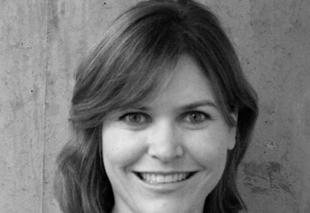

Abu Dhabi hotels see occupancy slump in Jan

Abu Dhabi hotels suffered huge decreases in revenue and occupancy rates in January, compared to the same month in 2009, according to latest data published on Wednesday.
The Middle East region was one of just two globally to still register declines in revenues in January, STR Global said.
Tourism in the UAE capital, which fared better than its neighbour Dubai during 2009, was badly hit last month with occupancy rates plummeting more than 27 percent, the figures revealed.
Average daily rates (ADR) in the city fell more than 18 percent in January while revenue per available room (revPAR) slumped by 40 percent.
The Middle East/Africa region as a whole also reported decreases in all three key measurements for last month, said STR Global, although the rate of decline did slow compared to December 2009.
The region’s occupancy in January fell 2.3 percent to 54.8 percent, ADR decreased 1.9 percent to $170.20, and revPAR dropped 4.1 percent to $93.23.
“Overall, the Middle East/Africa region continues to be one of two regions that still reports declines in RevPAR”, said Elizabeth Randall, managing director of STR Global.
“It is good to see the decline is getting smaller, from -7 percent in December to -4 percent for January compared to the prior year. Therefore, we still expect the region to follow on the recovery path that we set up last month."
But the Middle East still achieved the second highest revPAR of all the world sub regions at $120, surpassed only by the Caribbean with $128.
Two Middle East markets posted double-digit occupancy decreases including Abu Dhabi (-27.1 percent to 56.5 percent), and Muscat, Oman (-21.6 percent to 53.1 percent).
Muscat led the ADR decreases, falling 25 percent to $256.73, followed by Abu Dhabi with a 18.3 percent decrease to $286.80.
Muscat (-41.2 percent to $136.27) and Abu Dhabi (-40.5 percent to $162.02) reported the largest RevPAR decreases.
It was not all bad news for the region as hotels in Dubai, Amman, Jordan, and Beirut, Lebanon showing increases in occupancy rates of more than six percent.
But it was not all bad news as Amman, Jordan, reported the largest occupancy increase, rising 7.1 percent to 44.1 percent, followed by Beirut, Lebanon (6.1 percent to 57.6 percent), and Dubai (6.1 percent to 72.1 percent). Abu Dhabi hotels suffered huge decreases in revenue and occupancy rates in January, compared to the same month in 2009, according to latest data published on Wednesday.
The Middle East region was one of just two globally to still register declines in revenues in January, STR Global said.
Tourism in the UAE capital, which fared better than its neighbour Dubai during 2009, was badly hit last month with occupancy rates plummeting more than 27 percent, the figures revealed.
Average daily rates (ADR) in the city fell more than 18 percent in January while revenue per available room (revPAR) slumped by 40 percent.
The Middle East/Africa region as a whole also reported decreases in all three key measurements for last month, said STR Global, although the rate of decline did slow compared to December 2009.
The region’s occupancy in January fell 2.3 percent to 54.8 percent, ADR decreased 1.9 percent to $170.20, and revPAR dropped 4.1 percent to $93.23.
“Overall, the Middle East/Africa region continues to be one of two regions that still reports declines in RevPAR”, said Elizabeth Randall, managing director of STR Global.
“It is good to see the decline is getting smaller, from -7 percent in December to -4 percent for January compared to the prior year. Therefore, we still expect the region to follow on the recovery path that we set up last month."
But the Middle East still achieved the second highest revPAR of all the world sub regions at $120, surpassed only by the Caribbean with $128.
Two Middle East markets posted double-digit occupancy decreases including Abu Dhabi (-27.1 percent to 56.5 percent), and Muscat, Oman (-21.6 percent to 53.1 percent).
Muscat led the ADR decreases, falling 25 percent to $256.73, followed by Abu Dhabi with a 18.3 percent decrease to $286.80.
Muscat (-41.2 percent to $136.27) and Abu Dhabi (-40.5 percent to $162.02) reported the largest RevPAR decreases.
It was not all bad news for the region as hotels in Dubai, Amman, Jordan, and Beirut, Lebanon showing increases in occupancy rates of more than six percent.
But it was not all bad news as Amman, Jordan, reported the largest occupancy increase, rising 7.1 percent to 44.1 percent, followed by Beirut, Lebanon (6.1 percent to 57.6 percent), and Dubai (6.1 percent to 72.1 percent).
In Saudi Arabia, it was a mixed picture with occupancy rates down seven percent, ADR up 4.5 percent and revPAR down 2.8 percent.